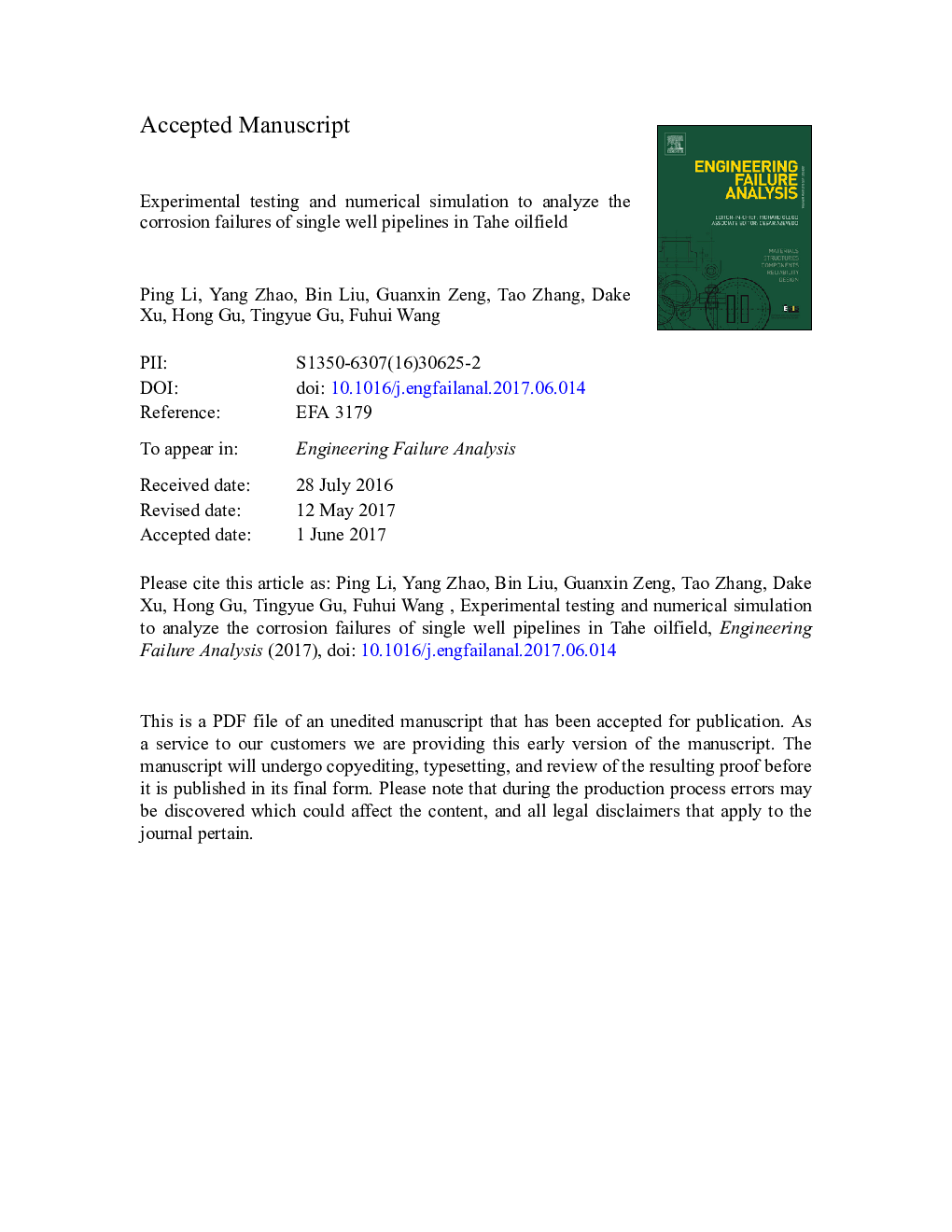| Article ID | Journal | Published Year | Pages | File Type |
|---|---|---|---|---|
| 5013498 | Engineering Failure Analysis | 2017 | 37 Pages |
Abstract
Frequent corrosion failures occurred on single well gathering lines in a section of the Tahe oilfield. The corrosion failures were investigated by means of experimental lab testing and numerical simulation. The electrochemical test results showed that the corrosion of the pipelines were controlled by two different mechanisms, which were influenced mainly by excessive dissolved oxygen (DO), higher temperature, lowered flow velocity and increased water cut. One mechanism was influenced by the excessive DO concentration and the higher temperature of injection water near the pipe entrance region. The corrosion rate noticeably increased at the entrance at a high temperature until DO was exhausted. The other mechanism resulted from the oil-water separation due to decreased flow velocity at the terminal climbing pipe sections. The change in flow led to the suspended particles being deposited, which caused under-deposit corrosion. The statistical analysis of the field corrosion data supported the two corrosion mechanisms.
Related Topics
Physical Sciences and Engineering
Engineering
Industrial and Manufacturing Engineering
Authors
Ping Li, Yang Zhao, Bin Liu, Guanxin Zeng, Tao Zhang, Dake Xu, Hong Gu, Tingyue Gu, Fuhui Wang,
